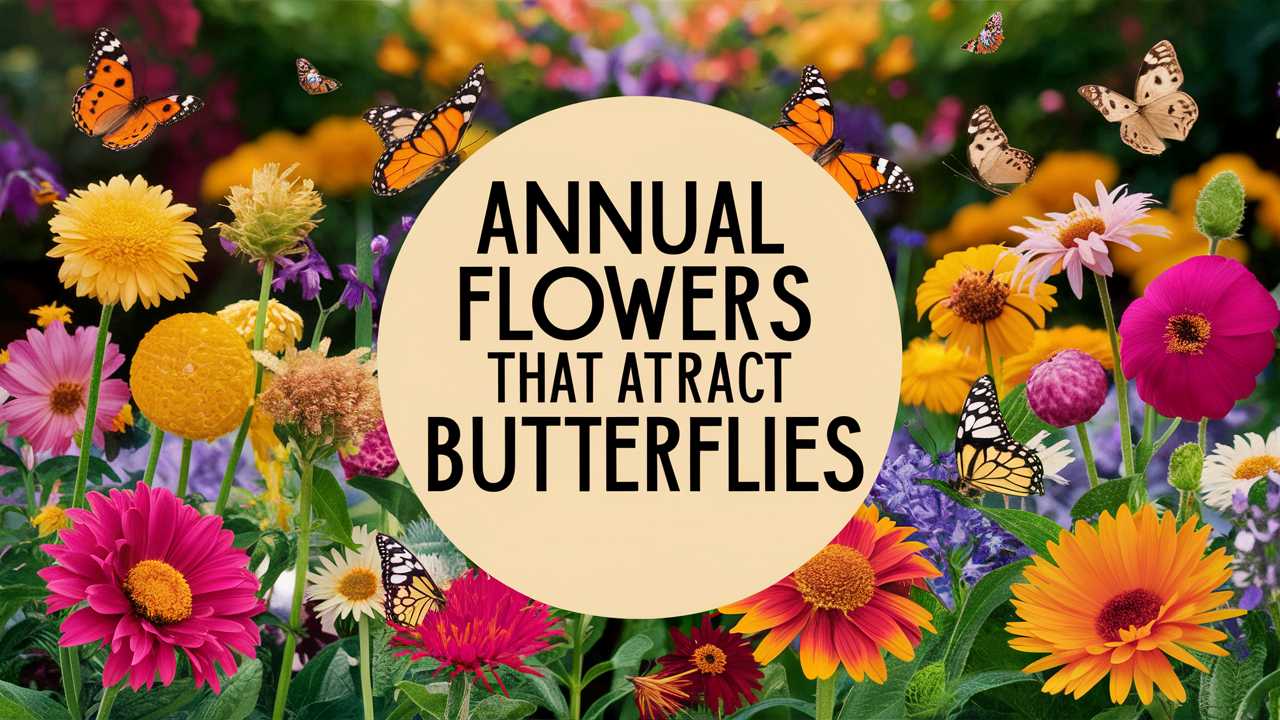In this guide, we’ll explore a delightful array of annual flowers that are particularly appealing to butterflies, transforming your garden into a vibrant haven for these delightful pollinators.
Zinnias
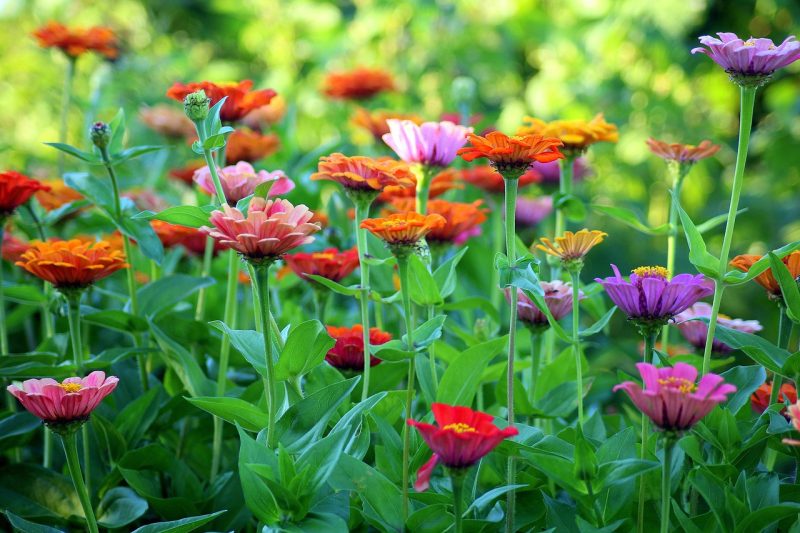
Zinnias are among the top choices for attracting butterflies, and it’s easy to see why. These brightly colored, cheerful blooms come in a variety of shapes and sizes, making them versatile additions to any garden. Butterflies, particularly the vibrant Painted Lady and Monarch, are drawn to their clusters of nectar-rich flowers. Zinnias thrive in full sun and well-draining soil, making them relatively low-maintenance. Their long blooming season, from late spring to frost, ensures a steady food supply for butterflies throughout the summer.
Interestingly, zinnias come in a range of colors—from fiery reds and yellows to soft pastels—which can easily enhance the aesthetic appeal of your garden. Consider planting them in groups for a striking visual impact and a more inviting atmosphere for butterflies.
Cosmos
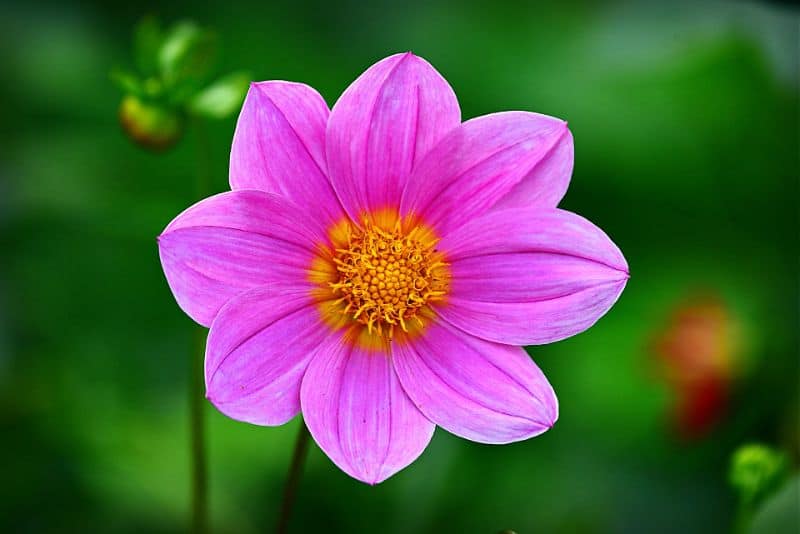
Next on our list are cosmos, known for their airy, delicate petals that add a whimsical charm to gardens. Their daisy-like flowers come in shades of pink, white, and purple, making them a favorite amongst butterflies. There are many varieties of cosmos, but the Cosmos bipinnatus is particularly popular as it is easy to grow and attracts a multitude of pollinators, including not just butterflies, but bees as well.
Cosmos prefer well-drained soil and can often tolerate drought, allowing them to thrive in various landscape conditions. Their long-lasting blooms can reach heights of 4 to 5 feet, providing an ample landing spot for butterflies to rest. Plant them near pathways or garden borders, and you’ll frequently spot butterflies fluttering among the vibrant blooms.
Marigolds (Tagetes)
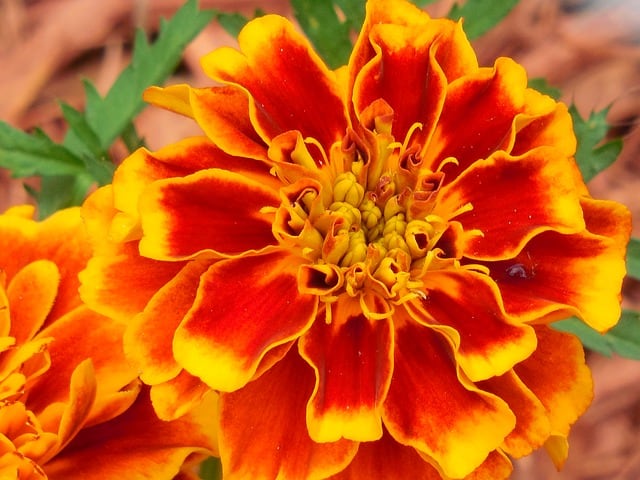
Marigolds are celebrated not only for their eye-catching hues (from sunny orange to deep yellow) but also for their ability to attract butterflies. These resilient flowers thrive in sunny locations and are incredibly easy to cultivate, making them perfect for both novice and experienced gardeners. Marigolds exude a robust aroma that repels certain garden pests, which is an added bonus for maintaining a healthy garden ecosystem.
Their blooms provide ample nectar, inviting various types of butterflies, notably Swallowtails and March flies. As a bonus, marigolds are known for their anti-nematode properties, providing an extra layer of defense for vegetable gardens while contributing to overall garden beauty.
Sunflowers (Helianthus annuus)
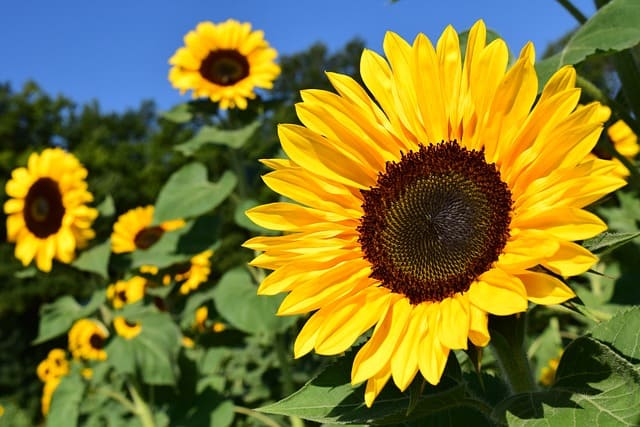
Sunflowers are not only iconic symbols of summer; they also serve as a magnet for butterflies. Their large, open flower heads are essentially a buffet of nectar, attracting species ranging from Monarchs to Painted Ladies. These towering giants can reach heights of up to 10 feet or more, creating a stunning focal point for any garden.
The sunflower’s bright yellow petals and sturdy stem provide a perfect perch for butterflies. Planting a variety of sunflower types, including those that produce seeds, can also attract birds once the blooms have faded—creating a lively, multi-functional garden space. Sunflowers thrive in full sun, favoring well-drained soils, and their cheerful presence can spark joy in both garden enthusiasts and butterflies alike.
Lantana
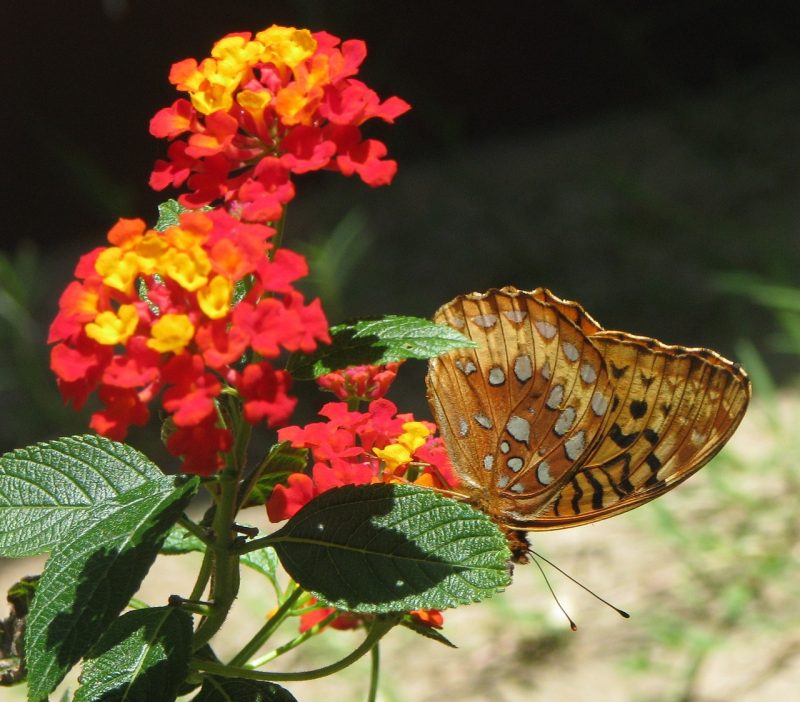
Lantana is a bold, sprawling perennial often treated as an annual in cooler climates, known for its bright, multi-colored flower clusters. It’s one of the most attractive plants for butterflies, particularly the Common Buckeye and Fiery Skipper. Lantana is known for its resilience; it can withstand drought, poor soil, and high heat, making it a durable choice for many gardens.
The vibrant flowers of lantana emit a sweet fragrance that butterflies cannot resist. Additionally, their low-maintenance nature and ability to continuously bloom from spring until frost ensure that your garden remains a butterfly haven throughout the season.
Tithonia (Mexican Sunflower)
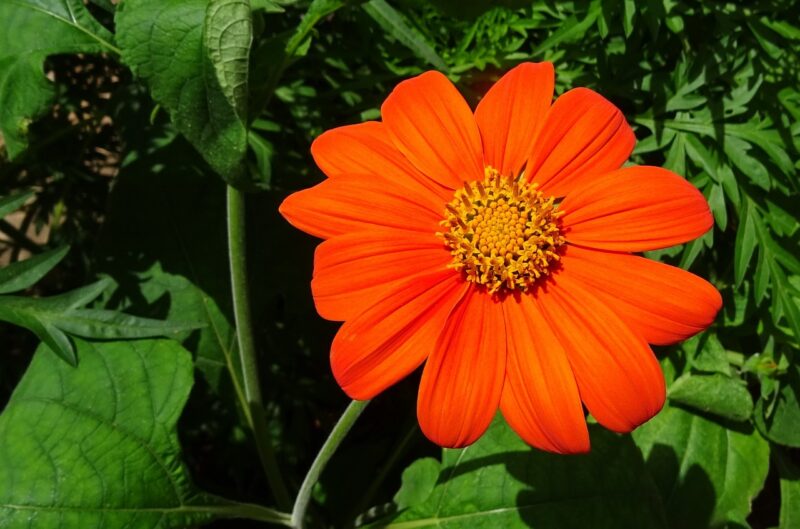
Tithonia, or Mexican Sunflower, is a less common but equally enchanting plant that butterflies adore. Its vivid orange blooms are not only striking but also provide plentiful nectar for a variety of butterfly species. Tithonia prefers full sun and well-drained soils, making it an ideal choice for garden beds that soak up plenty of sunlight.
What sets Tithonia apart is its impressive height and bushiness, often reaching 3 to 5 feet tall. By planting these flowers in clusters, you can create a stunning display that beckons butterflies. Additionally, Tithonia is often a self-seeding annual, so you may enjoy the delightful surprise of returning blooms each growing season.
Verbena (annual types)
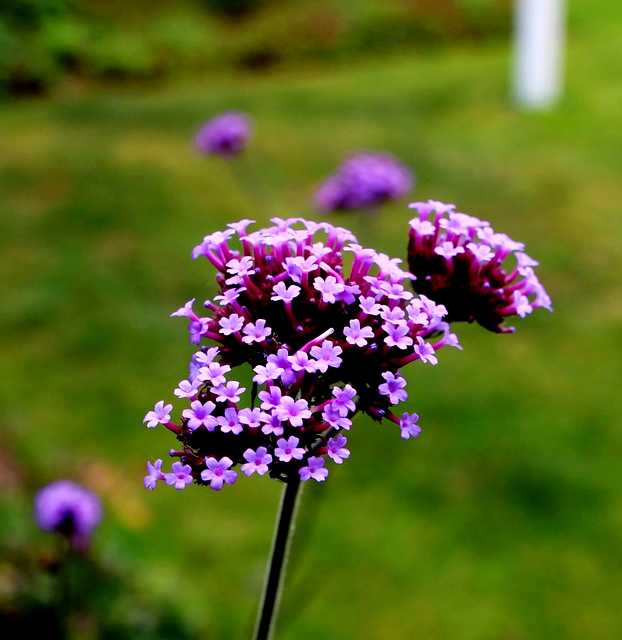
Annual verbenas are known for their sprawling habit and fragrant blooms, and they are a perfect treat for butterflies. With shades ranging from purples and blues to whites and reds, verbena brings color and texture to any floral arrangement. The nectar-filled flower heads are a source of sustenance for various butterfly species, including Monarchs and Swallowtails.
Verbenas thrive in sunny locations and well-drained soil, often blooming throughout the summer months. Their low-growing and trailing nature makes them an excellent candidate for borders, hanging baskets, and containers. With their vibrant presence, you’ll find butterflies fluttering around the garden, drawn by the sweet fragrance and rich nectar.
Cleome (Spider Flower)
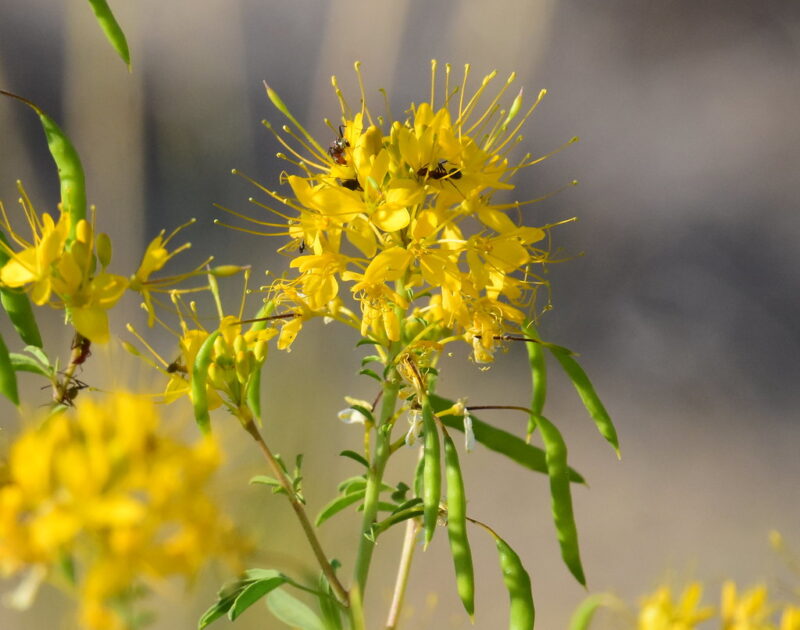
Cleome, or Spider Flower, offers an interesting architectural element to your garden, while also attracting butterflies. With their tall stems and spiky blooms, cleomes can grow up to 5 feet tall, making them a striking focal point. The unique flower clusters emerge in shades of pink, white, and purple, enhancing your garden’s visual appeal.
Butterflies are drawn to cleome for their ample nectar reserves. These flowers thrive in full sun and tolerate poor soil conditions, making them an excellent choice for less-than-ideal gardening situations. Additionally, cleome’s long blooming season means it serves as a reliable nectar source available from late spring until early fall.
Nicotiana (Flowering Tobacco)
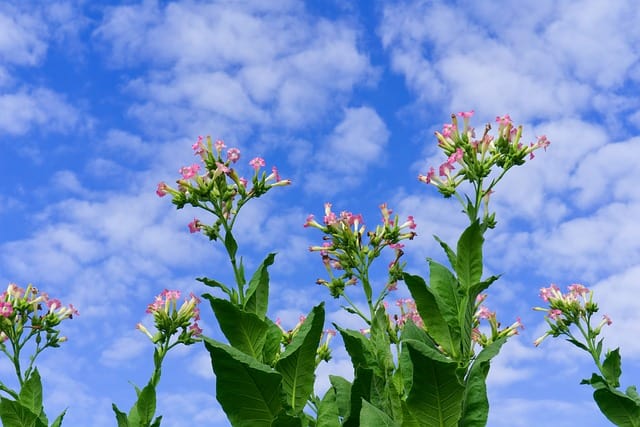
Nicotiana, often referred to as Flowering Tobacco, offers inviting tubular flowers that are particularly attractive to moths and butterflies alike at dusk. While most commonly grown for their pleasant fragrance, they also play an essential role in attracting various butterfly species during the day.
These plants are unique in that they thrive in both sun and partial shade, making them versatile for any garden area. Nicotiana’s wide array of colors and heights creates visual interest and a layered effect in your flower beds. Not only will your garden be more beautiful, but it’ll also become a preferred spot for butterflies looking for a sweet treat.
Salvia (annual varieties like Salvia splendens)
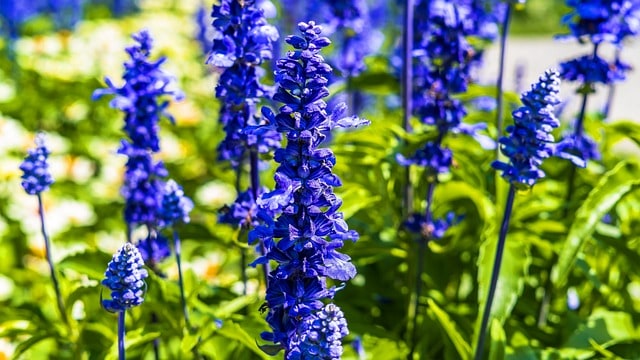
Salvia, particularly the annual varieties like Salvia splendens, is a magnet for butterflies and hummingbirds alike. These flower spikes come in vibrant hues, including blue, red, and purple, providing not only nectar for butterflies but also a feast for the eyes. Salvia is resilient and thrives in well-draining soil and full sun, making it a reliable option for attracting pollinators.
Known for their long-growing season, salvias bloom from early summer all the way through frost. Their unique flower structure allows butterflies to feed easily, making them a favorite among these beautiful insects. Planting salvia en masse will create a striking display that enhances your garden’s aesthetics while beckoning butterflies to visit.
Petunias
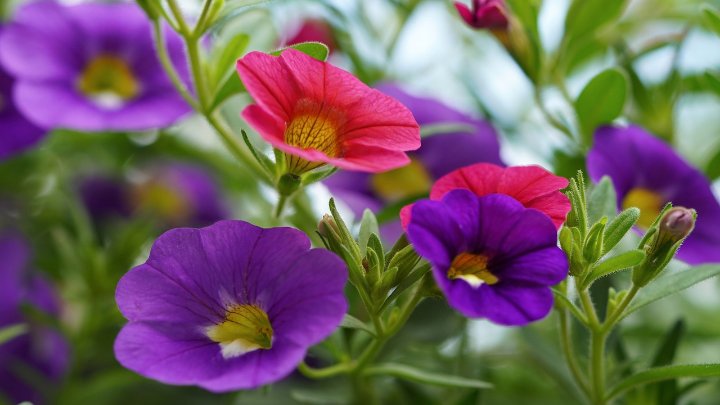
Petunias are known for their incredible diversity and striking colors, making them a popular garden annual. They offer tantalizing nectar to butterflies drawn to their wide-open blooms. From classic purples and pinks to bold yellows and whites, petunias can complement any garden theme.
These flowers thrive in well-drained soils and can adapt to various sunlight conditions, from full sun to partial shade, providing versatility for your flower beds. Petunias bloom profusely, often with continuous flowering throughout the summer, ensuring your garden remains a butterfly-friendly paradise.
Ageratum (Floss Flower)
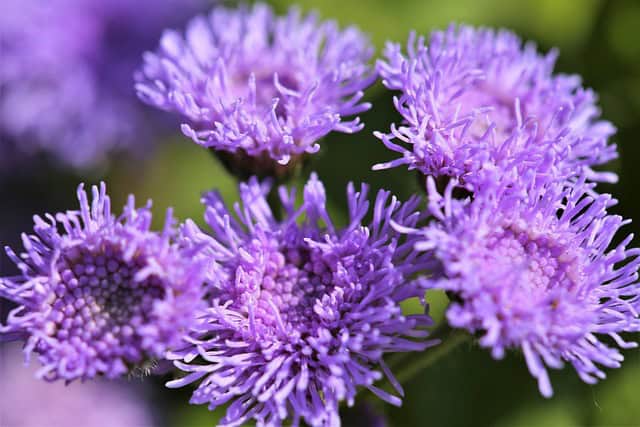
Ageratum, or Floss Flower, is known for its fuzzy, pom-pom-like blooms that often come in shades of blue, lavender, and white. These delightful flowers produce ample nectar, attracting butterflies such as the Common Buckeye and Blue Admiral. Their compact growth habit makes them ideal for planting in borders or containers.
Ageratum prefers well-drained soil and thrives in full sun, where it can bloom profusely throughout the summer months. These charming flowers not only brighten your garden but also provide essential resources for butterflies. Incorporating ageratum into your gardening plans ensures a steady stream of visitors in the form of fluttering butterflies.
Snapdragons (Antirrhinum majus)
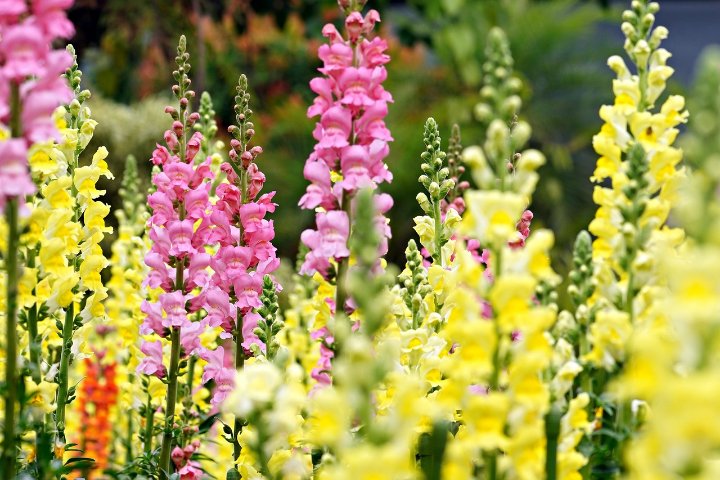
Snapdragons are unique annual flowers characterized by their unique, dragon-shaped blooms that can be a whimsical addition to any garden. Their vibrant spectrum of colors, including pinks, yellows, reds, and whites, makes planting these tall, sturdy flowers an aesthetically pleasing choice.
While snapdragons primarily attract bees, butterflies eagerly seek nectar from their blossoms. These flowers enjoy full sun and can adapt to various soil types, presenting gardeners with a robust option for butterfly gardens. Plant them in groups for a more pronounced visual display, ensuring a delightful spot for butterflies to gather.
Alyssum (Lobularia maritima)
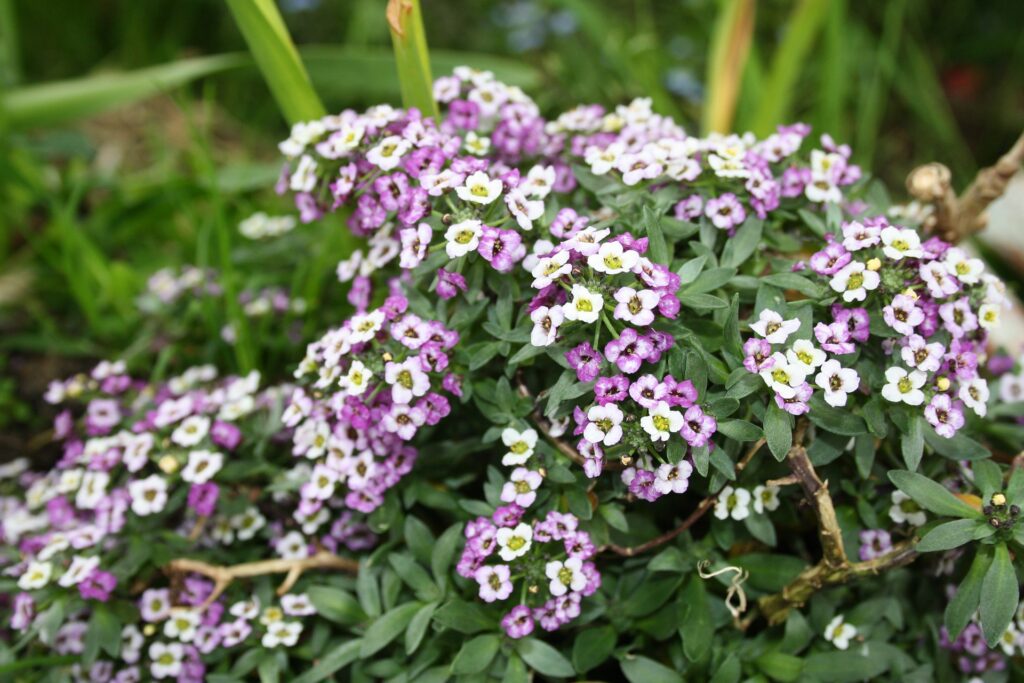
Sweet alyssum is a charming annual flower known for its delicate clusters of tiny white or lavender blooms that emit a sweet fragrance. Alyssum is not just visually appealing; its nectar-rich flowers attract butterflies and beneficial insects alike. Due to their low-growing nature, these plants can fill in spaces and serve as borders in garden beds.
Alyssum thrives in full sun but can tolerate partial shade, making it a versatile choice for varied garden environments. Their long bloom period from early spring to fall means that butterflies will likely find these flowers throughout the growing season. Growing sweet alyssum can improve the entire ecosystem of your garden while creating an inviting space for butterflies.
Four o’clocks (Mirabilis jalapa)
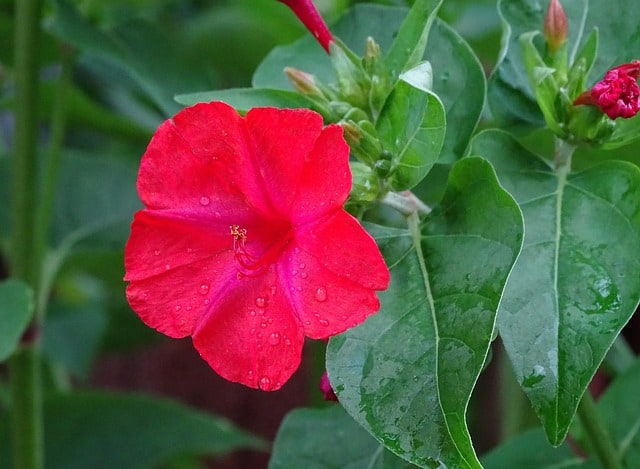
Four o’clocks are unique for their evening blooming habits, releasing a delightful fragrance at dusk. Their vibrant flowers can bloom in shades of pink, yellow, white, and red, adding bold color to your garden. Naturally, these fragrant blooms attract night-flying butterflies and pollinators.
Growing well in full sun, four o’clocks are quite resilient and can thrive in poor soils. Their sprawling nature creates an informal garden look, making them perfect for cottage gardens or wildflower areas. The enchanting presence of four o’clocks means butterflies will flock to your yard, especially during the evening.
Impatiens
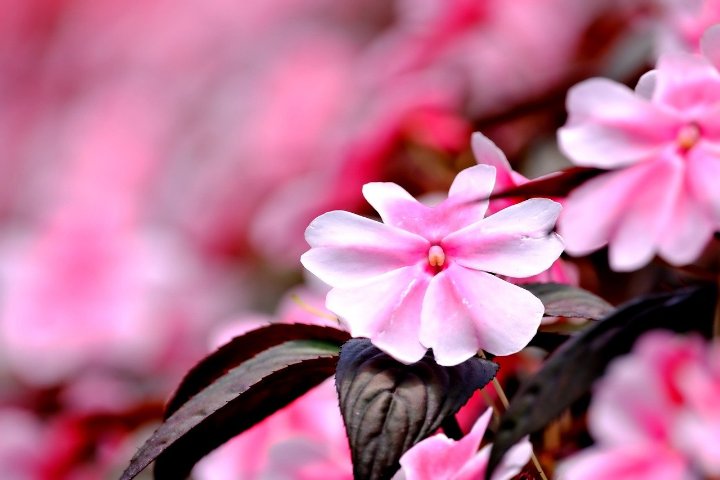
Impatiens bring vibrant color to shaded areas of your garden, making them perfect for spots where other flowers may struggle. With their lush foliage and wide variety of colors, they add a lively touch to any landscape. Though primarily known for attracting bees, butterflies enjoy their nectar, making them a solid addition to a butterfly garden.
Impatiens thrive in shaded to partially shaded locations and require moist, well-drained soil. Their compact growth makes them excellent for borders and containers, where they can complement other sun-loving flowers. From red to pink to white, the variety of impatiens encourages butterflies to stop and sip nectar in your garden.
Sweet William (Dianthus barbatus)
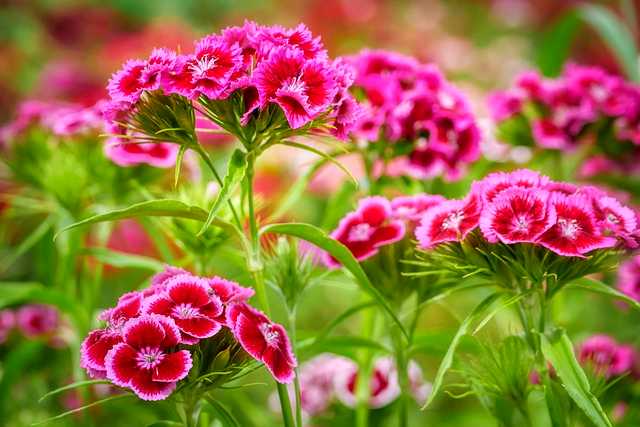
Sweet William is an exquisite flowering plant that brings bursts of color and fragrance to gardens. Its flat-topped clusters of flowers bloom in vibrant shades of pink, red, and white, catching the eyes of gardeners and butterflies alike. This perennial is often treated as an annual in many gardens, thriving in sunny spots with well-drained soil.
Butterflies are naturally drawn to the showy blooms of Sweet William, which produce ample nectar. Their compact growth habit allows them to pair beautifully with other flowers and contribute to the overall biodiversity of your garden. As they bloom throughout the season, they create a welcoming environment for butterflies to visit.
Calendula (Pot Marigold)
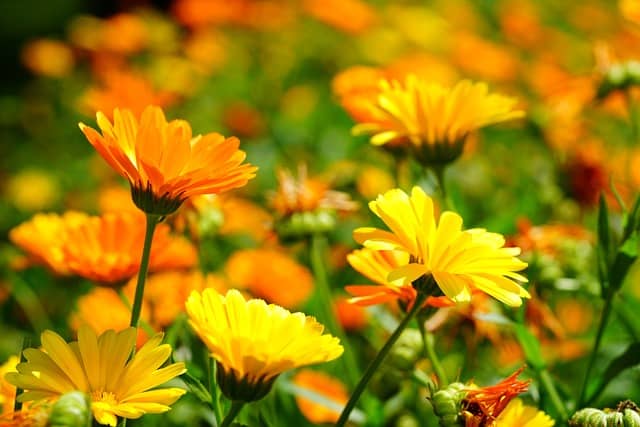
Calendula, or Pot Marigold, is known for its vibrant orange and yellow blooms that are favored by both gardeners and pollinators. These flowers are not only beautiful but also have culinary and medicinal uses, making them a multi-purpose addition to any garden.
Calendula provides a rich nectar source for butterflies and can be grown easily in various soil conditions. They thrive in full sun and are often sown directly into the garden. With a long flowering season, calendula is ideal for attracting butterflies throughout the growing season, ensuring your garden remains lively and full of fluttering visitors.
Bachelor’s Buttons (Centaurea cyanus)
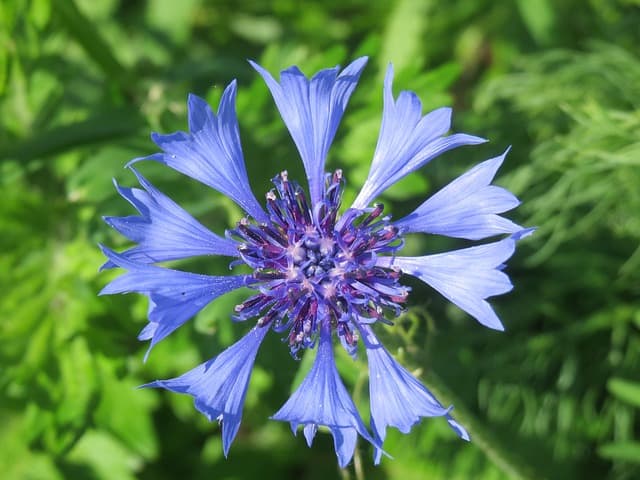
Bachelor’s Buttons are charming annuals known for their striking blue flowers, though they can also bloom in shades of pink and white. These unique and hardy flowers attract butterflies with their abundance of nectar, encouraging many species to visit. Known for their easy care, bachelor’s buttons can adapt to various conditions, making them a great choice for different garden sites.
They thrive in well-drained soil and full sun, often blooming from spring until frost. Planting bachelor’s buttons in clusters will create a fantastic sea of color in your garden, attracting butterflies and other beneficial insects, while adding timeless beauty to your landscape.
Morning Glories (Ipomoea)
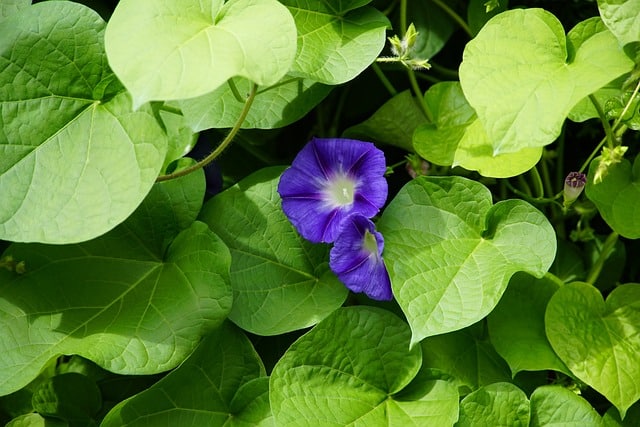
Morning glories are fast-growing annual vines known for their striking trumpet-shaped flowers. They come in shades of blue, purple, pink, and white, showcasing a stunning display as they climb trellises or fences. Morning glories release nectar that butterflies find irresistible, drawing many to their vibrant blooms.
These plants thrive in full sun and well-drained soil, making them suitable for many garden spaces. As they open early in the morning, they’re especially appealing to butterflies that seek food during the daytime hours. When planted en masse, they’ll create a spectacular backdrop filled with fluttering visitors.
Scarlet Sage (Salvia coccinea)
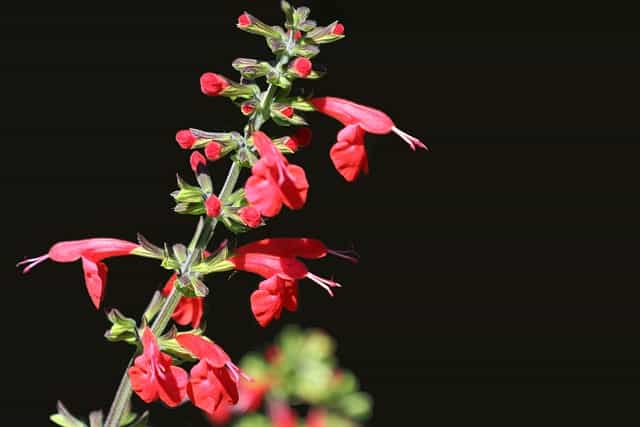
Scarlet sage is a beautiful, drought-tolerant plant that features stunning red flower spikes, making it a striking addition to any garden. Its tubular flowers are particularly inviting to hummingbirds and butterflies, providing a substantial nectar source.
Scarlet sage prefers full sun and can adapt to poorer soils, making it a resilient choice for various gardening environments. The long bloom season will ensure that your garden remains vibrant and enticing for butterflies throughout the summer, contributing to both color and pollinator activity in your outdoor space.
Portulaca (Moss Rose)
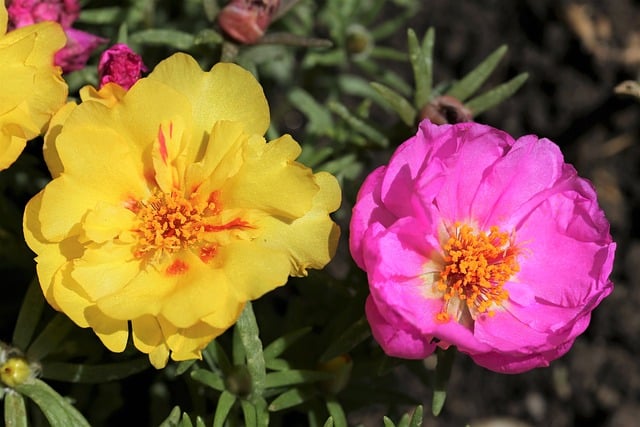
Portulaca, or moss rose, is a succulent annual flower known for its ability to flourish in hot, dry conditions. The fleshy leaves and brightly colored blooms attract butterflies and other pollinators looking for a sweet nectar feast. They come in a variety of colors, including pink, red, yellow, and orange.
These resilient flowers thrive in sunny spots and well-drained, sandy soils, making them perfect for rock gardens or containers. As they bloom profusely throughout the summer, portulaca will certainly draw butterflies to your garden, creating a vibrant and lively atmosphere.
Globe Amaranth (Gomphrena globosa)
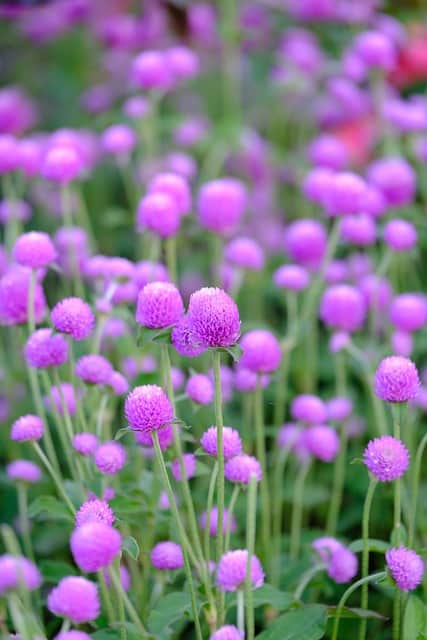
Globe amaranth is a unique and often overlooked annual flower that is both stunning and resilient. Its round flower heads are usually found in shades of purple, red, and pink, adding whimsical charm to your flower beds. The textured petals provide great landing spots for butterflies, making them an inviting option for your garden.
They thrive in full sun and well-drained soil, often blooming from summer to fall. Globe amaranth is also appreciated for being long-lasting once cut, making it suitable for various arrangements. Their mere presence in the garden guarantees that butterflies will flock to their alluring blooms.
Phlox (annual varieties)
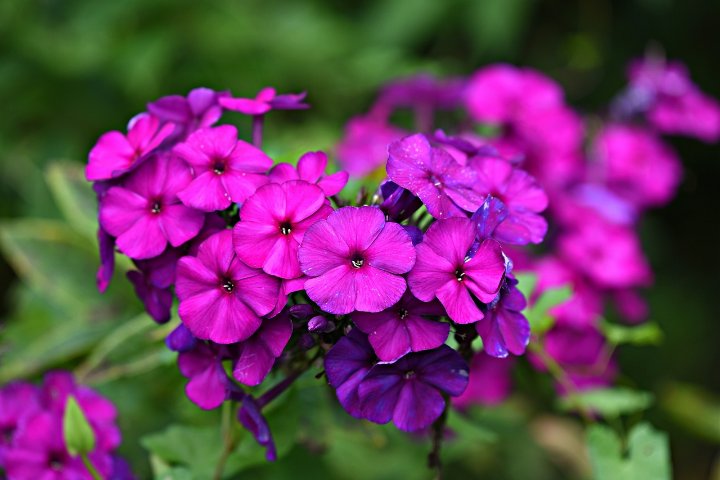
Phlox brings a charming burst of color to any space with its vibrant blooms and appealing fragrance. Annual varieties, especially Phlox drummondii, are quite popular for attracting butterflies, as their nectar-rich flowers are favorites among various species. Phlox comes in shades of pink, red, white, and blue, creating a harmonious display.
These plants thrive in full sun and well-drained soil, often attracting butterflies from afar with their sweet scent. To create a butterfly-friendly garden, consider planting diverse varieties of phlox to keep your landscape in harmony with nature. With continuous blooms throughout the summer, your garden will likely become a favorite meeting place for local butterflies.
Sweet Peas (Lathyrus odoratus)
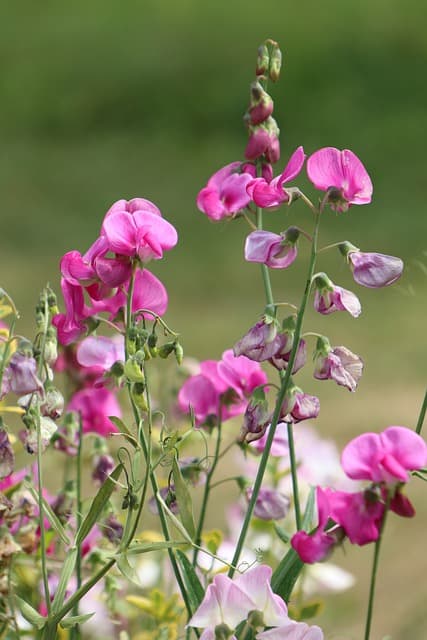
Sweet peas are beloved for their exquisite fragrance and colorful, delicate blooms. Often grown as climbing vines, they attract butterflies and other pollinators drawn to their sweet nectar. Sweet peas flourish in various garden settings, where they can create stunning, fragrant displays.
These annuals thrive in cool-weather conditions and prefer full sun to partial shade. They can easily be trained on trellises or fences, turning any garden into a secret retreat teeming with enchanting butterflies. With their delightful aroma and visual appeal, sweet peas are an irresistible choice for creating a butterfly garden.
Clarkia (Godetia)
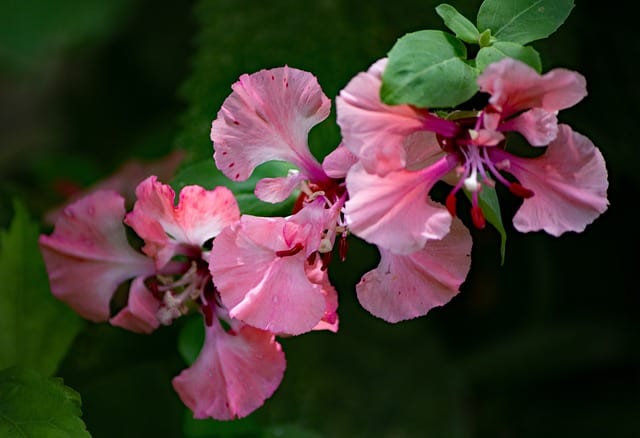
Clarkia, also known as Godetia, features lovely, cup-shaped blooms that come in an array of colors, including pink, red, and lavender. Though they may not be the most common choice, these flowers provide substantial nectar that attracts butterflies. Their native habitat includes open fields, and they are well suited for cottage gardens and wildflower meadows.
Clarkia thrives in full sun and prefers well-draining soils that stay moderately moist. Their unique blooms create a soft, romantic feel to the landscape, drawing in butterflies with their colorful petals and sweet nectar throughout the growing season.
Black-eyed Susan (Rudbeckia hirta – sometimes grown as annual)
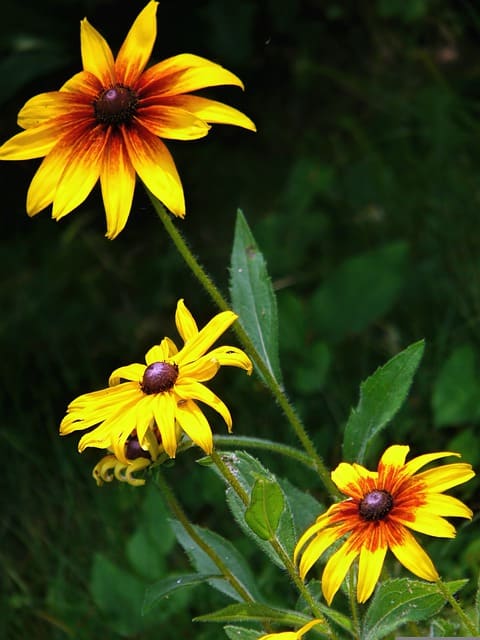
Black-eyed Susans, although commonly known as perennials, can be grown as annuals in many regions. Their iconic black centers surrounded by bright yellow petals add warmth and cheer to any garden. These flowers are not only striking to the eye but also serve as essential food sources for butterflies.
Black-eyed Susans thrive in sunny locations and well-drained soils, making them incredibly versatile. With their extended blooming period, butterflies will be frequently drawn to their blossoms. This iconic flower is a wonderful addition to enhancing both beauty and biodiversity in your garden.
Balsam (Impatiens balsamina)
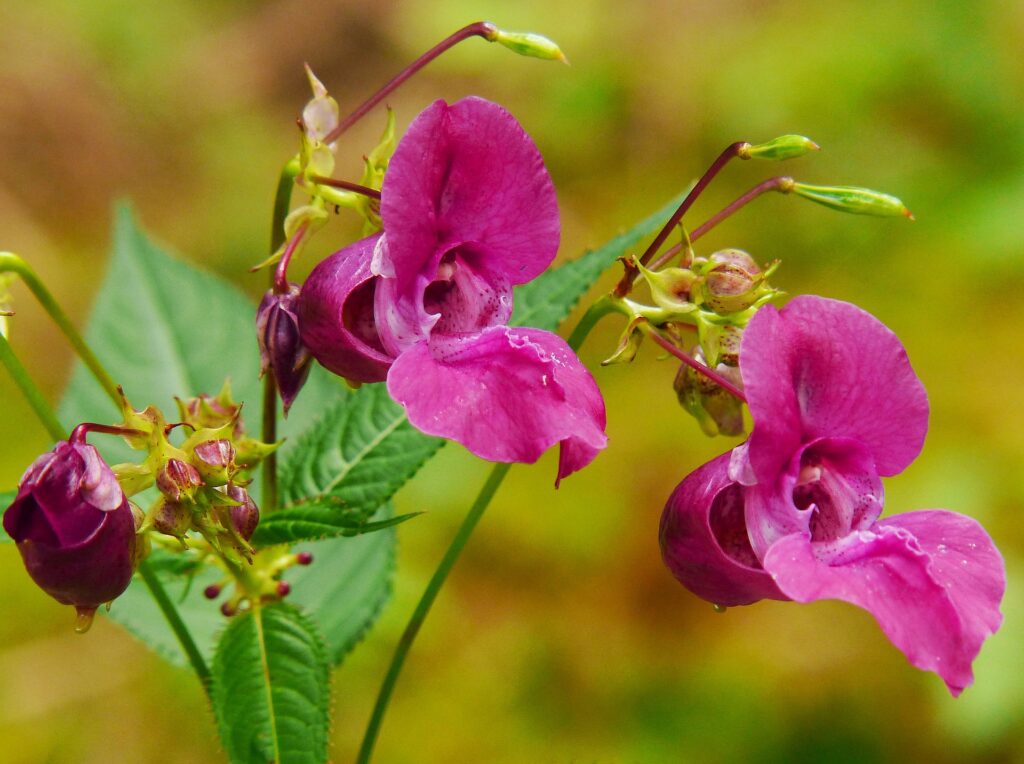
Balsam, also known as touch-me-not or jewelweed, is a vibrant annual flower characterized by its delicate blooms in shades of pink, purple, and white. The rich nectar produced by these flowers attracts various butterfly species, making them a delightful addition to any garden.
Balsam enjoys warm, moist soils and prefers part sun to full sun conditions. Their unique, bouncy growth pattern can fill spaces with vibrant color, bringing a delightful energy to your butterfly garden. As they bloom throughout the summer months, butterflies will flock to their sweet nectar-rich petals.
Coreopsis (annual varieties)
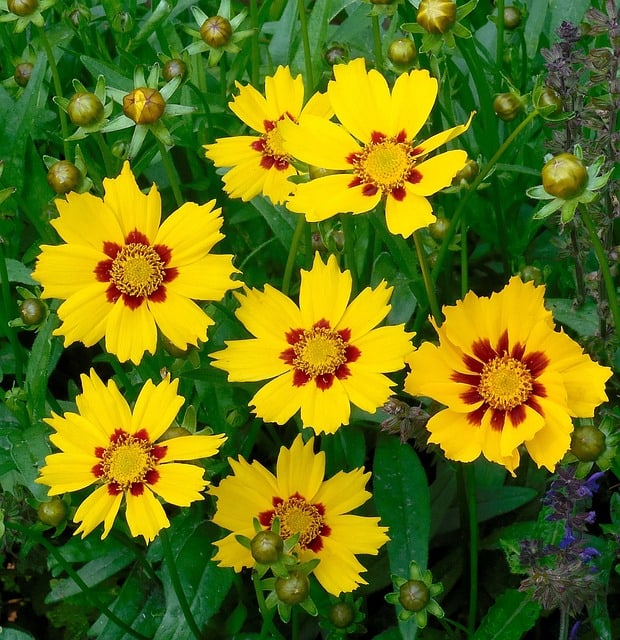
Coreopsis, particularly the annual varieties, provide stunning daisies in shades of yellow, orange, and red that are beckoning to butterflies. Their ability to thrive in poor soils and full sun makes them effortless to grow while still providing bountiful blooms.
Coreopsis blooms generously, with some varieties flowering continuously throughout the summer and into the fall. This ensures that butterflies have access to nectar and invites them to your garden for a feast. Plant them in sunny areas, and enjoy the vibrant color and lively pollinators they attract.
Morning Glory Bush (Ipomoea carnea)

The morning glory bush is not just a sight to behold but also an excellent choice for attracting butterflies. These large, strap-like leaves and clusters of trumpet-shaped flowers create a lush backdrop as they grow in height. The pink and white blossoms exude a welcoming fragrance, drawing butterflies and hummingbirds alike.
This shrub prefers full sun and well-drained soil, making it an ideal choice for various garden settings. Its enchanting presence and unique growth habit add depth while serving as a sugar station for local butterflies throughout the blooming season.
Linaria (Toadflax)
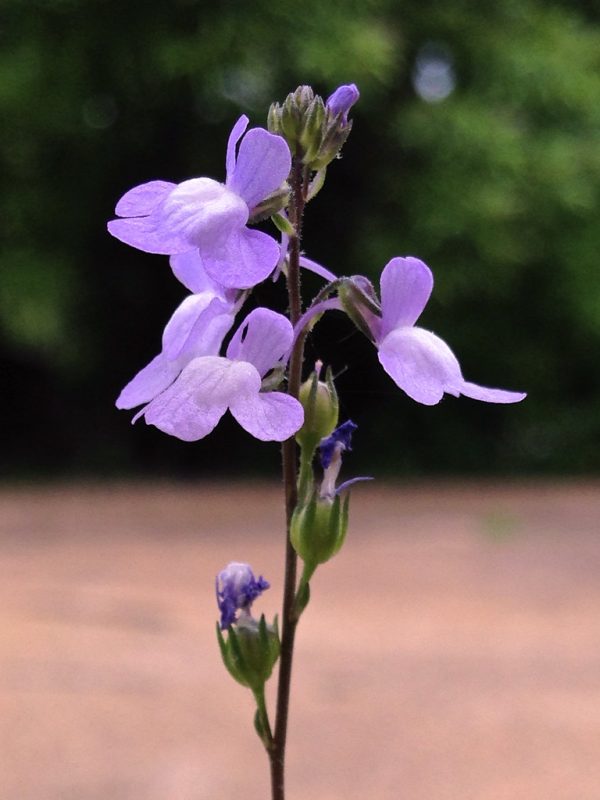
Linaria, commonly known as toadflax, features spiky, tubular flowers that flutter like tiny butterflies themselves. With hues ranging from yellow to lavender, these attractive blooms produce nectar that butterflies find irresistible.
Toadflax grows happily in sunny spots and well-draining soil. As a resilient plant, it attracts not only butterflies but also a variety of beneficial insects. Incorporating toadflax creates a dynamic garden environment, filled with colorful beauty and buzzing activity.
Dahlberg Daisy (Thymophylla tenuiloba)

Dahlberg daisies are charming, sun-loving annuals known for their cheerful yellow flowers. These dainty blooms produce considerable nectar, which butterflies instinctively seek, making them a fun addition to any butterfly garden.
Thymophylla tenuiloba thrives in dry, sandy soils and tolerates drought once established. Their low-growing habit pairs beautifully with taller flowers, providing a lovely contrast. They brighten up borders and paths, drawing butterflies to their sunny blooms, ultimately spreading joy in your outdoor space.


